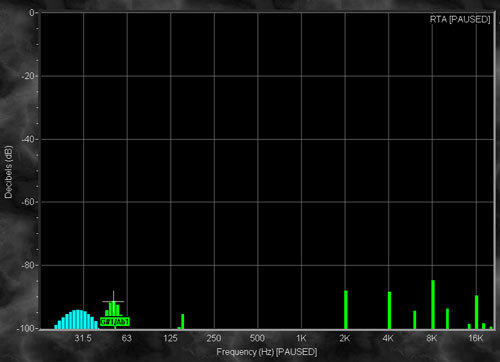Terratec's Aureon 7.1 FireWire Attempts Plug-and-Play with Pro Sound Card Performance
Behavior At 24 Bits/96 KHz
Operation at 96 kHz offers improved performance in certain areas and a slight (but very slight) deterioration in others. This is fairly logical behavior, since increasing bandwidth is not always totally advantageous. In any case, the results were excellent for a card of this type.
| Frequency response (20 Hz - 20 kHz) | +0.03, -0.41 dB |
| Weighted signal-to-noise ratio | 103.2 dB(A) |
| Distortion | 0.0069% |
| Stereo crosstalk | 102.5 dB |
Frequency response : No change in reproduction of the audio spectrum. The grade remains "very good."
Noise level : Noise becomes very low at this level and equivalent to that of the best mass-market sound cards.
Dynamic capacity : The dynamic capacity decreases in relation to 48 kHz, which seems to offer the best compromise.
Distortion : Despite figures that were not quite as good, the result is very comparable to that achieved at 48 kHz.
Intermodulation : Here again, there is a slight deterioration in comparison with performance at 48 kHz but the result remained very good.
Stereo separation : This leaps the 100 dB barrier. In other words, you have nothing to worry about as far as diaphony is concerned.
Get Tom's Hardware's best news and in-depth reviews, straight to your inbox.
The phono input is a very interesting addition because it proves to be fully usable. The RIAA correction is pretty good so noise is very faint, much less than is usual when playing a vinyl disk. So there are no worries on that point.
Current page: Behavior At 24 Bits/96 KHz
Prev Page Behavior At 24 Bits/48 KHz Next Page Games And 3D






